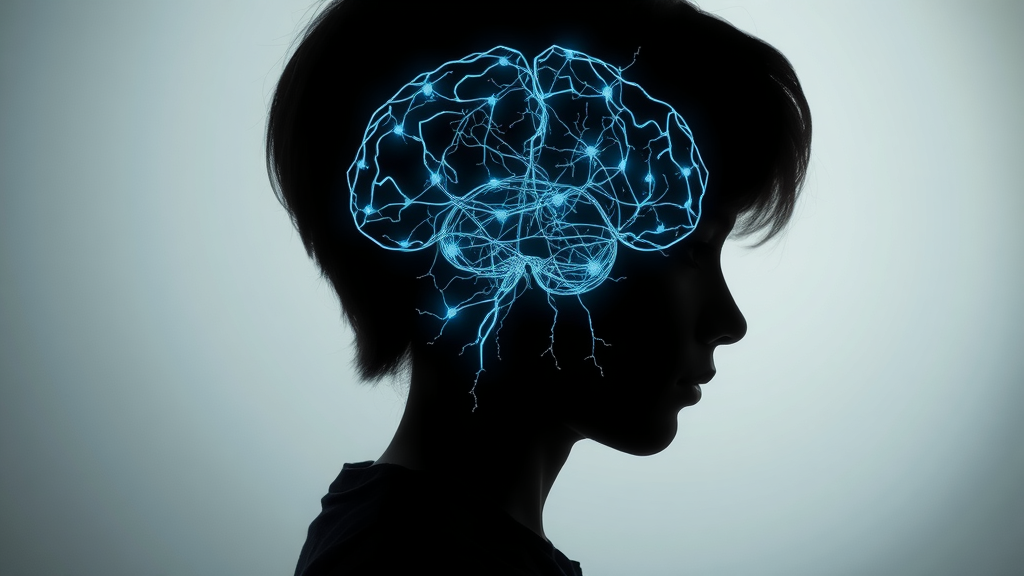Hook: Did you know that in the United States, opioid overdose deaths among teens have surged more than 90% in the last decade—even as overall drug use in adolescents has declined? This startling truth exposes an urgent and often overlooked crisis: opioid abuse in teens. Families, schools, and communities are grappling with the devastating consequences, but awareness and timely intervention can change lives. This article reveals the signs, risks, and family-centered solutions every parent and caregiver should know.
A Startling Truth: The Growing Epidemic of Opioid Abuse in Teens
"In the United States, teen opioid misuse has seen a staggering increase—underscoring the urgent need for family awareness and action."
The numbers around opioid abuse in teens paint a concerning picture. According to recent research, nearly 7% of high school students in the United States have misused prescription opioids at least once in the past year. This epidemic is not confined to a single region or demographic; it affects school students across urban, suburban, and rural areas with equal intensity. Many families remain unaware of the risk factors—or the fact that the very medications prescribed for pain relief at home could be fueling this crisis. What's even more alarming is that opioid misuse often leads to substance use disorders or even drug overdose, with synthetic opioids like fentanyl raising the stakes even higher.
Prescription opioid misuse among young adult populations has not only led to higher rates of substance abuse but also a tragic increase in opioid overdose deaths and emergency hospitalizations. As families, educators, and healthcare providers, understanding the scope and subtleties of the problem is the first step. It's critical, now more than ever, that we commit to prevention efforts and equip ourselves with strategies to keep our youth safe—and that starts with honest conversation and factual awareness.
Statistics on Opioid Abuse in Teens in the United States |
|
Statistic |
Data |
|---|---|
Teens who misused prescription opioids in the past year |
~7% |
Opioid overdose deaths among ages 15-19 (past year) |
1,250+ |
High school students reporting easy access to prescription opioids |
20%-30% |
Opioid misuse leading to substance use disorder |
Over 50% of misuse cases |
Synthetic opioid involvement in teen overdose deaths |
Rising rapidly, over 60% of cases |

What You'll Learn About Opioid Abuse in Teens
How to identify warning signs of opioid abuse in teens
The impact of prescription opioids and opioid misuse on adolescent brain development
Effective family intervention and support strategies
Resources for disorder treatment and recovery
Understanding Opioid Abuse in Teens: Beyond Prescription Opioids
Opioid abuse in teens extends beyond typical drug abuse stereotypes. Not only do teens encounter illegal drugs, but many start their journey with prescription opioids found inside their own homes. The prevalence of opioid misuse in adolescents is often linked to misconceptions about the safety of medications prescribed by a care provider. When used outside of intended medical guidance, prescription opioids can act as a dangerous gateway to substance use disorders and even illegal drug consumption.
The risk is exacerbated by the normalization of prescription drug use in the United States, coupled with the spread of synthetic opioids that magnify the potential for opioid overdose and overdose death. Families and school students are squarely in the frontline, and the signs of disorder treatment needs often remain invisible until it's almost too late. By understanding why teens are vulnerable and the multifaceted role prescription opioids play, parents and educators can better address prevention and intervention.
Why Are Teens Vulnerable to Prescription Opioids and Opioid Misuse?
Teenagers face unique risk factors that make them susceptible to opioid misuse. Peer pressure, changing social dynamics, and a desire for experimentation often collide with the accessibility of prescription medication at home. During high school, many students seek ways to cope with stress, emotional pain, or mental health issues, making the allure of prescription opioids—believed to be safer than illegal drugs—especially tempting.
The adolescent brain is still developing executive functions, such as impulse control and risk assessment, which increases their vulnerability to substance use disorders. Compounding this is the fact that warning signs can be subtle, and teens may hide their misuse due to stigma, fear of punishment, or lack of awareness about the associated dangers of prescription opioid misuse.
Peer pressure
Accessibility of prescription opioid medications
Perception of safety
The Role of Prescription Opioids in the Rise of Teen Abuse
Prescription opioids are increasingly at the heart of adolescent drug abuse trends. Well-meaning parents may keep painkillers like oxycodone or hydrocodone in the medicine cabinet, not realizing their potential for misuse among teens. Recent surveys indicate that a significant share of high school students can access these medications without a prescription, often leading to habitual misuse before reaching young adulthood.
Unlike illegal drug use, the misuse of prescription opioids can progress quietly, making it harder for caregivers to spot. Even a single episode of misuse can drastically increase the risk of developing a substance use disorder, making prompt disorder treatment vital. As synthetic opioid availability grows—often in counterfeit pills—the potential for accidental overdose and overdose deaths multiplies.
Ultimately, prescription opioids serve as a "silent threat" that requires family vigilance, open conversations, and actively securing household medications to prevent unintentional drug overdose and addiction among teens.

How Opioids Affect the Teenage Brain
Opioid misuse is particularly damaging during adolescence because the teenage brain is in a critical stage of growth and reorganization. Research shows that exposure to prescription opioids and other substances negatively impacts how teens process emotions, manage stress, and make decisions. This period is when the brain’s reward system is especially sensitive, making it easier for drug abuse to trigger long-term tendencies towards substance use disorders.
Opioid abuse in teens reduces the brain’s ability to regulate dopamine and impairs neuronal function—two changes linked to challenges in learning, lowered impulse control, and heightened vulnerability to mental health issues. The risk factors for substance abuse also overlap with those for depression and anxiety, underscoring the need for a holistic response spanning education, intervention, and disorder treatment.
Understanding the Neurological Consequences of Opioid Misuse
When teens misuse opioids, these powerful drugs bind to brain receptors and hijack the reward and pleasure pathways. Over time, the brain adapts to these heightened chemical signals, requiring more of the drug for the same effect—a process known as tolerance. The result is a dangerous cycle: increased dosage escalates the risk of drug overdose, while sudden cessation can lead to severe withdrawal and mental distress.
Neurologically, this also disrupts key processes such as memory formation, emotional regulation, and decision-making. Habitual opioid misuse during adolescence can set the stage for lifelong substance use disorders and mental health struggles that persist into adulthood.
Why Prescription Opioids Are Especially Risky for Adolescents
Prescription opioids, despite being medically sanctioned, are uniquely hazardous to the developing teen brain. Because adolescent neural networks are still maturing, exposure can interfere with normal emotional development, increase the propensity toward impulsive behavior, and reduce the effectiveness of natural coping mechanisms.
The risk of overdose death is also elevated with synthetic opioids, which are significantly more potent and more likely to be found in counterfeit or adulterated street drugs. For teens, a single misuse event with a synthetic opioid can result in rapid respiratory distress, loss of consciousness, or fatal opioid overdose. This is why both prevention and early disorder treatment are vital for families striving to break the cycle of substance use disorder in their children.

Recognizing the Signs: Four Most Common Indicators of Opioid Abuse in Teens
Sudden changes in mood or behavior
Unexplained absence from school or declining grades
Physical symptoms—slurred speech, drowsiness
Missing prescription opioids from home
These warning signs are the most reliable indicators of opioid abuse in teens. Families should be alert for sudden shifts in mood—such as increased irritability, apathy, secrecy, or withdrawal from friends and activities. Academic changes often go hand in hand with social behaviors; missing school, tardiness, or abrupt drops in grades may suggest a deeper problem. Physical symptoms, like drowsiness between periods or slurred speech, can easily be mistaken for normal teenage sleepiness but may signal a more serious underlying substance use disorder.
If prescription opioid medications are missing or depleted faster than expected, this is a major red flag demanding immediate attention. Timely conversation and, if needed, professional disorder treatment can prevent the escalation from opioid misuse to full-blown addiction and overdose death.
The Age Group Most Impacted: Opioid Abuse Demographics Across the United States
Age Distribution of Opioid Misuse and Prescription Opioid Abuse in Adolescents (United States) |
||
Age Group |
Reported Opioid Misuse (%) |
Prescription Opioid Misuse Rate (%) |
|---|---|---|
12-13 years |
1.2% |
0.9% |
14-15 years |
3.1% |
2.7% |
16-17 years |
6.2% |
5.7% |
18-19 years |
8.8% |
7.4% |
Why Teenagers Are at High Risk for Opioid Addiction
The data highlights that as teens enter late adolescence, their risk for opioid misuse and dependence increases significantly. Social influences, the stress of academic and extracurricular pressures, and increased independence all contribute to heightened vulnerability. Furthermore, this age bracket intersects with expanded access to prescription opioids—sometimes due to injuries, wisdom tooth extractions, or sports-related pain.
Combined with ongoing changes in the adolescent brain, this creates a "perfect storm" for the onset of substance use disorders. The earlier opioid misuse is identified and addressed through family awareness and access to disorder treatment, the greater the chances of successful recovery and prevention of drug overdose deaths.
Most Common Substance Abuse in Adolescence: Contextualizing Opioid Abuse in Teens
Comparing Opioid Abuse to Other Adolescent Substance Use Patterns
While opioids draw critical attention due to their role in increasing overdose deaths among teens, other substances like alcohol, vaping, and marijuana continue to see high levels of adolescent use. However, prescription opioid misuse carries particular risk because the transition from legal use to dangerous misuse can happen quickly and often goes undetected by families or schools.
Alcohol, marijuana, and e-cigarettes are still the most commonly abused substances among high school students, but the lethality of opioids—even in small doses—demands special vigilance. When combined with other drugs, the risk of a fatal outcome is even higher, making it essential for families to understand the signs and seek rapid intervention and disorder treatment.
Adolescent Substance Abuse: Opioids vs. Other Common Substances |
||
Substance |
Reported Use (%) |
Primary Risks |
|---|---|---|
Alcohol |
18% |
Impaired judgment, accidents, addiction |
Marijuana |
15% |
Cognitive impairment, mental health risks, legal issues |
Nicotine (vape/cigarettes) |
12% |
Nicotine addiction, lung disease |
Prescription Opioids |
7% |
Overdose death, substance use disorder |
Other Illegal Drugs |
3-5% |
Varied overdose, legal, and health risks |

Contributing Factors to Opioid Misuse Among Teens and Families
Societal expectations in the United States
Family dynamics and stressors
Easy access to prescription opioids
Teen opioid misuse is shaped by a mix of external pressures and readily available prescription opioid medications. Societal expectations—pressure to achieve, appear resilient, and avoid showing vulnerability—can drive teens to seek relief in drugs. Family dynamics, such as poor communication, parental substance abuse history, or inconsistent boundaries, also contribute to risk factors.
Perhaps most critically, easy access to prescription opioids at home increases the temptation and opportunity for experimentation. Without proper disposal or secure storage, these medications can become a dangerous gateway to long-term substance use disorder and even fatal drug overdoses.
"Prescription opioids can be a gateway to long-term substance use disorder, especially when warning signs are ignored." – Leading Addiction Specialist

The Family’s Role: How to Recognize and Respond to Opioid Abuse in Teens
Building Open Communication About Opioid Misuse
Open, honest communication between parents and teens is the cornerstone of prevention efforts. Families should create a safe environment where teens can share challenges without fear of punishment. Ask direct, nonjudgmental questions if you notice possible signs of opioid misuse or if prescription opioids go missing. Routine discussions about the dangers of drug abuse, the reality of overdose death, and the true risks behind prescription drug misuse can reduce stigma and encourage help-seeking.
It's just as important for caregivers to model responsible behavior—securing medications, safely disposing of unused prescription opioids, and sharing age-appropriate information about substance abuse and mental health. If you suspect a problem, remain calm, listen actively, and involve your teen in crafting a plan for support or seeking help.
Seeking Professional Help and Disorder Treatment
Early professional intervention significantly improves outcomes for teens struggling with opioid abuse. Reach out to a qualified care provider, such as your family doctor, school counselor, or local treatment facilities, to discuss the indicators and next steps. Mental health professionals can assess the severity of substance use disorders and develop personalized treatment plans.
Disorder treatment options might include counseling, medication-assisted therapy, and support groups designed for adolescents. Many official websites and reputable gov websites offer information about local resources and how to begin the journey toward recovery. Family involvement during treatment greatly enhances the likelihood of a successful and sustained recovery.
Practical steps for early intervention
How to approach difficult conversations around prescription opioid misuse
Prevention Strategies: Keeping Teens Safe from Prescription Opioid and Opioid Abuse
Secure storage and disposal of prescription opioids
Educational resources for parents and teens
Community-level initiatives in the United States
Preventing opioid misuse requires action at home and within the broader community. Parents should treat prescription opioids with the same vigilance as any high-risk substance—store them securely in a locked medicine cabinet and regularly dispose of unused or expired medications at designated drop-off locations. Equip yourself and your teen with factual educational resources from trusted sources, such as your care provider or the official website of your local health department.
At the community level, schools and youth organizations can amplify prevention efforts, delivering evidence-based education and providing safe spaces for teens to discuss their experiences. The combined effect of household, school, and community initiatives creates a protective network that decreases the chances of opioid misuse and reduces the devastating toll of drug overdose deaths.

People Also Ask: Key Questions About Opioid Abuse in Teens
How do opioids affect the teenage brain?
Opioids interfere with brain chemical pathways, impairing judgment, memory, and emotional regulation in teens. This can cause decreased impulse control and increased susceptibility to mental health problems, making teens more prone to developing substance use disorders that often require professional treatment and long-term care.
What are the four most common signs of opioid abuse?
The main warning signs in teens include sudden changes in mood or behavior, unexplained absences from school or falling grades, physical symptoms like slurred speech and drowsiness, and evidence of missing prescription opioids at home. Recognizing these early allows for faster intervention and reduces the risk of severe outcomes.
What age group abuses opioids the most?
Opioid abuse is most prevalent among older teens—typically ages 16-19—due to increased independence, higher stress, and broader access to prescription opioids. This age group is at heightened risk for substance use disorders, drug overdose, and related health complications.
What is the most common substance abuse in adolescence?
Alcohol remains the most commonly abused substance among adolescents, followed by marijuana and vaping products. Prescription opioids, while used by a smaller proportion, carry some of the highest risks for overdose death and development of substance use disorder in teens.
FAQs: Families and Opioid Abuse in Teens
How can I talk to my teen about prescription opioids?
Start the conversation with empathy and open-ended questions. Explain your concerns honestly and highlight the risks without exaggeration. Use real-life examples and encourage your teen to ask questions or share their perspectives.Are there safe pain relief alternatives for adolescents?
Yes—non-opioid medications, physical therapy, and holistic strategies can be safer options for pain management. Always consult your care provider to tailor solutions to your teen’s needs.What resources exist for families in need of disorder treatment?
Many communities offer dedicated youth substance use disorder treatment programs, school-based counseling, and online resources through trusted official websites. Reach out to your child's doctor or guidance counselor for referrals and support.
Key Takeaways: Understanding & Acting on Opioid Abuse in Teens
Early signs of opioid misuse are easily overlooked by families
Timely intervention and education are critical
Prescription opioids present a unique risk for teens in the United States
Moving Forward: Empowering Families to Recognize and Respond
"Awareness and proactive family engagement can prevent the devastating effects of opioid abuse in teens."
Stay alert, talk openly, and seek help—because every family can make a difference
 Add Row
Add Row  Add
Add 





Write A Comment